- Getting Started
- Help
- Master Lists
- Useful Links
- Features
OOC Info Bestiary and Flora of The Spires
(This is a thread from Mizahar's fantasy role play forum. Why don't you register today? This message is not shown when you are logged in. Come roleplay with us, it's fun!)Built high in the massive branches of Taldera's bloodwood forest, The Spires is a city crafted by the peaceful and scholarly Jamoura. Considered a haven for scholars and sages Mizahar-wide, The Spires is a mecca of philosophy and science that draws people from far and wide with its promise of deeper thinking and higher reasoning.
-
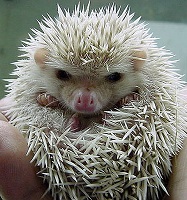
Capricious - Assistant Storyteller of The Spires
- Posts: 390
- Words: 171332
- Joined roleplay: September 25th, 2012, 11:14 am
- Location: The Spires
- Race: Staff account
- Office
- Medals: 1
-

Bestiary and Flora of The Spires
![]() by Capricious on March 3rd, 2013, 4:47 am
by Capricious on March 3rd, 2013, 4:47 am
Frequency: High
Threat level: Low
Major features: Neon colors, long tail
Abilities: High pitched whistle, flirtatious behavior, attaching to a citizen
Most common in: Southern Taldera
Physical characteristics:
The Spirian Courter is a majestic creature. The length of the bird can be up to five feet with a wingspan of two. The tailfeathers shorten with age. Weighing less than three pounds, the bird is the perfect weight for easy handling and fast flight.
The wings are exceptionally durable. The feathers are layered and curve inward toward the body. After each flight, the tools of flight need to be washed. The Courter prefers their mate to do this, but will themselves if not bonded. The bird never sheds.
The Courter is a fluorescent bird. The head has bright green spikes sticking out that fade into teal. This colors continues as a headdress and only changes at the tips of the wings and the chest. The tips of the wings become the same green as on the head. The inner torso is a blood red that fades into white under-feathers. These bright tail feathers lay under the longer teal ones.
Females and males do not differentiate.
The wings are exceptionally durable. The feathers are layered and curve inward toward the body. After each flight, the tools of flight need to be washed. The Courter prefers their mate to do this, but will themselves if not bonded. The bird never sheds.
The Courter is a fluorescent bird. The head has bright green spikes sticking out that fade into teal. This colors continues as a headdress and only changes at the tips of the wings and the chest. The tips of the wings become the same green as on the head. The inner torso is a blood red that fades into white under-feathers. These bright tail feathers lay under the longer teal ones.
Females and males do not differentiate.
Social Structure:
The Spirian Courter leaves the nest as soon as its wings are dry. The mother will push them from the home and watch as they tumble to the forest floor. The wings are so durable when dry that they, more often than not, soar to the bottom and land harmlessly than smash into the dirt. From here, the Courter must make its way into the wild in search of water.
Less than three days old, the Courter will fill its stomach with water, dig a hole in the earth and burrow for three weeks without eating. Worms eat the young feathers and new, stronger ones, replace them. When the liquid inside has evaporated, the bird will leave. Within three bells, the Courter is able to take its first flight. This is an amazing feat to watch.
The bird is mature at one season and can take part in the seasonal bonding. Every season at exactly the forty-fifth day, all Spirian Courters gather on the Petal of Whispering Zelphyr. Females court the males and show off the length of their tail feathers. The male and female whose length match will be bonded for the rest of their lives. If one mate dies, the other will not rebond but instead attach to a citizen of the Spires.
The Spirian Courter attaches to a total of twenty five citizens per year, rarely Jamoura. It is very picky on the type of person they choose and tend to stalk the citizen for nearly three weeks before starting to make a nest in the citizen's home. The Courter will decide on people, not based on their skill, but their personalities. A bird with a similar personality is more likely to bond with someone who is like them. Males attach to females and females attach to males. As with the courting process, they will view the "tail" length. In the case of a non-Jamoura, this would be the length of hair. In a Jamoura, the bird would judge based solely on the personality.
They will not bond with a person who already has an animal of any sort. If the person adopts an animal after the bonding, the Courter will grudgingly adapt. In the case of the mate adopting a bird, the Spirian Courter will take this as a "death" and leave.
The Courter is an extremely loyal bird and easy to train. They are very low maintenance and need little more than a corner to make a nest and a bird bath.
The Spirian Courter can live for twenty five years and have up to three eggs per season before and after bonding. The eggs are infertile unless the Courter is mated with the male or female. Every other batch will be one gender. Example: 3 female, 3 male, 3 female
Less than three days old, the Courter will fill its stomach with water, dig a hole in the earth and burrow for three weeks without eating. Worms eat the young feathers and new, stronger ones, replace them. When the liquid inside has evaporated, the bird will leave. Within three bells, the Courter is able to take its first flight. This is an amazing feat to watch.
The bird is mature at one season and can take part in the seasonal bonding. Every season at exactly the forty-fifth day, all Spirian Courters gather on the Petal of Whispering Zelphyr. Females court the males and show off the length of their tail feathers. The male and female whose length match will be bonded for the rest of their lives. If one mate dies, the other will not rebond but instead attach to a citizen of the Spires.
The Spirian Courter attaches to a total of twenty five citizens per year, rarely Jamoura. It is very picky on the type of person they choose and tend to stalk the citizen for nearly three weeks before starting to make a nest in the citizen's home. The Courter will decide on people, not based on their skill, but their personalities. A bird with a similar personality is more likely to bond with someone who is like them. Males attach to females and females attach to males. As with the courting process, they will view the "tail" length. In the case of a non-Jamoura, this would be the length of hair. In a Jamoura, the bird would judge based solely on the personality.
They will not bond with a person who already has an animal of any sort. If the person adopts an animal after the bonding, the Courter will grudgingly adapt. In the case of the mate adopting a bird, the Spirian Courter will take this as a "death" and leave.
The Courter is an extremely loyal bird and easy to train. They are very low maintenance and need little more than a corner to make a nest and a bird bath.
The Spirian Courter can live for twenty five years and have up to three eggs per season before and after bonding. The eggs are infertile unless the Courter is mated with the male or female. Every other batch will be one gender. Example: 3 female, 3 male, 3 female
Miscellaneous:
The Spirian Courter is most often seen at the Whispering Tunnel.
Unless provoked, the Spirian Courter is a harmless creature. When upset, it will use its small beak to pinch and twist. The bird also contains a whistle that has the ability to temporarily deafen a person for three days.
The bird was created with the Djed Storm of 512 AV and arrived to the city at the 45th of Spring 512 AV.
Unless provoked, the Spirian Courter is a harmless creature. When upset, it will use its small beak to pinch and twist. The bird also contains a whistle that has the ability to temporarily deafen a person for three days.
The bird was created with the Djed Storm of 512 AV and arrived to the city at the 45th of Spring 512 AV.
Frequency: High
Threat level: Medium
Major features: Long beak, sharp talons, loud shriek
Abilities: Eating the food of people
Most common in:
Southern Taldera
Physical characteristics:
Female and males differentiate tremendously. Females can grow to five centimeters in length and have a wingspan of four centimeters. Males are nearly twice as big.
The females are dull brown birds with extraordinarily short tempers. They have no coloring besides brown and have shorter beaks. The talons are sharper. The females are more territorial and prone to attack.
The males are exceedingly colorful. The face is a burning orange speckled with grey. A black beak is longer than the females'. A single blue stripe covers the eyes and back. The wings have three orange dots on them. The tail feathers have one orange feather and one yellow feather. The middle of the back, near the rear end, is a bright gold.
The females are dull brown birds with extraordinarily short tempers. They have no coloring besides brown and have shorter beaks. The talons are sharper. The females are more territorial and prone to attack.
The males are exceedingly colorful. The face is a burning orange speckled with grey. A black beak is longer than the females'. A single blue stripe covers the eyes and back. The wings have three orange dots on them. The tail feathers have one orange feather and one yellow feather. The middle of the back, near the rear end, is a bright gold.
Social Structure:
The Calling Troubler lives a lonely life. It does not take mates and leaves the nest at half a season of age. The Troubler reaches maturity at three seasons and mates once a year. The female can lay up to seven eggs. This bird rarely interacts with humans/Jamoura/etc. except to steal food.
Miscellaneous:
The Troubler has a love of non-bird food. It has been known to follow people who have edible substances and wait until the person is not look before diving in and snapping the food away. The individual has a momentary warning of a loud, piercing shriek. The person is better off releasing the food; the bird has no qualms about snapping at the hand keeping them from eating.
This bird is makes its nest in the Whispering Tunnel and eats the ivy.
This bird is makes its nest in the Whispering Tunnel and eats the ivy.

Name: Bald Eagle
Characteristics: Bald Eagles are mainly brown with a white head and tail. The have large, hooked beaks. The sexes are the same in plumage, but females are noticeably larger. They live near bodies of water, as they typically feed on fish.
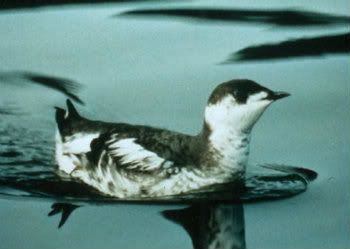
Name: Marbled Murrelet
Characteristics:The Marbled Murrelet is a coastal bird in Southern Taldera that feeds off a large inlet of Storm Bay. They usually are white beneath a black crown, back, nape, and wings. They typically nest in the Bloodwoods, but can be found all over coastal Taldera, but remain in the south during Winter.
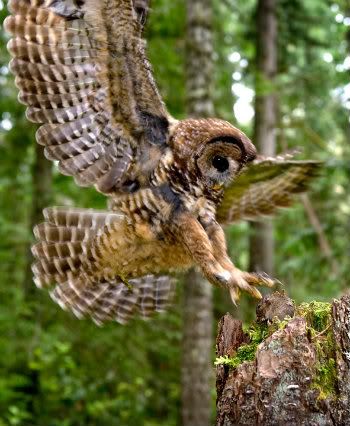
Name: Talderan Spotted Owl
Characteristics:The Talderan Spotted Owl typically lives in the older forests around The Spires. It nests within trees, or on large platforms or branches. They form long-term bonds, but divorce is not uncommon among them. They are nocturnal, and typically feed on wood rats and flying squirrels, as well as other small mammals, lizards, birds, and insects.
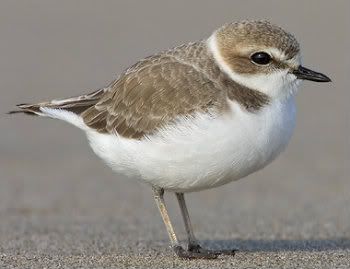
Name: Snowy Plover
Characteristics:The Snowy Plover can be found near any saltwater source in Taldera. They are a wader, and will nest in ground scrapes in the sand. They feed upon insects and other invertebrates.
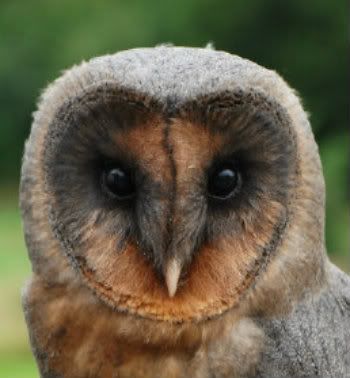
Name: Spirian Russet Owl
Characteristics:The Spirian Russet Owl is a gentle bird of dark plumage and red highlights. Happy to hunt rodents, snakes, and the occasional small bird, they are still fierce when provoked or baited. The cries of the Russet Owl may instill confusion into those that alarm them, but are often used for the purpose of hunting.
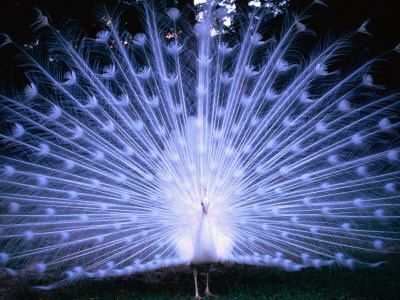
Name: Talderan Star Peacock
Characteristics:Frequency: Low
Threat Level: Low
Major Features and Description: Resembling it's namesake, the star peacock is quite a novelty to be found in the Taldera region. Found only in the Spires, more specifically at the Shrine of Zintila, this bird is to be considered one of the rarities of Mizahar. From head to tail, this bird is all white, its feathers giving off a faint pearly sheen to onlookers who are lucky enough to spot this exotic bird. However, most natives of the Spires prefer to catch sight of this bird at night, as they fondly call this bird "a fallen star". Due to bacteria that resides in minuscule indentations on their feathers, the star peacock glows with a luminous light at night, much like a star. No one had been able to explain this phenomenon and many like to say that each bird is a star that fell to the earth and given life, their purpose to watch over Zintila's shrine to await the day she returns to power. They are also well sought after by many a rich noble and ambitious poacher, each wanting to hoard the feathers for their own purposes. Because of this, the Spires citizens value these birds highly, and severe consequences are carried out if these birds are disturbed in their natural dwelling.
Social Structure: The star peacock has a very close knit social structure, and once this rare bird finds a mate, they mate for life. The males take care of building the nests and watching over the eggs and chicks while the females tend to gathering the food for the family. Chicks stay with their families until adulthood and then strike out on their own to find mates.
*Credit to Sahashkalila
-

Capricious - Assistant Storyteller of The Spires
- Posts: 390
- Words: 171332
- Joined roleplay: September 25th, 2012, 11:14 am
- Location: The Spires
- Race: Staff account
- Office
- Medals: 1
-

Bestiary and Flora of The Spires
![]() by Capricious on March 3rd, 2013, 4:48 am
by Capricious on March 3rd, 2013, 4:48 am
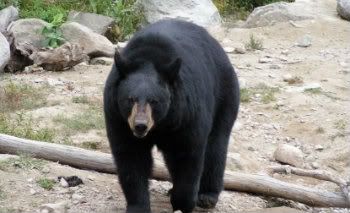
Name: Black Bear
Characteristics: A medium sized, omnivorous bear, most common of all bears in Southern Taldera. Despite their name, they come in wide variety of colors, including, black, white, cinnamon, blond, and many shades of brown. Males typically weigh 1000-1500lbs, and females weigh 250-500lbs. They predominately eat plants, but will also consume insects, honey, salmon, and other mammals.
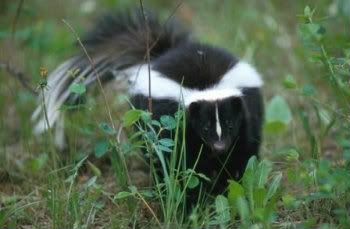
Name: Striped Skunk
Characteristics:Striped skunks are omnivorous, furry, black critters with a parted white stripe running down the length of their bodies that is present at birth. The stripes serve as a warning sign to any who venture too close. If that warning is not heeded, the skunks will spray their predator with an extremely unpleasant scent. Should all else fail, the skunk will most likely flee. Males are slightly larger than females, about the sizes of domestic cats, and the species ranges from 6 to 9 pounds in weight. These skunks mate in the spring season. The striped skunk is most active at dusk and dawn when it will feed on a variety of fruits, insects, or other small animals while it retreats to its burrow during the night and day.
*Credit goes to Tiki
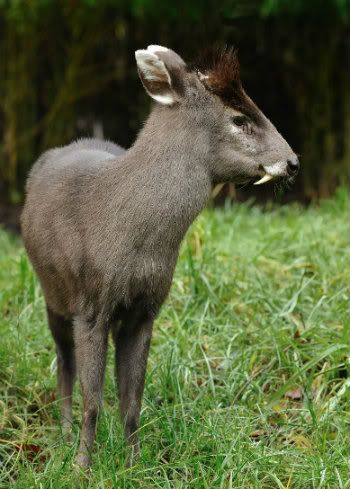
Name: Tufted Deer
Characteristics:The Talderan Tufted Deer has a coat of fur which ranges from a greyish light brown to a dark coffee bean brown color, richly seeming. It is small in comparison to most of its other deer counterparts, standing at no more than 25 inches tall and weighing no more than 110 lbs, the small mammal uses its size for quickness and maneuverability as well as evasion of the larger predatory species. Able to sniff and dig edible roots up from the forest floor, the Talderan Tufted Deer feeds mostly on roots, tubers, plants and the such as they are herbivores.
A trait that stands out for these small deer, both male and female have tusks protruding from their mouths, how you can discern male from female is that the females will have small antlers and the males will not, as they are roughly the same size for both genders. The tuft of hair on their head acts as sensors for around them, such as air patterns, they have okay eyesight but nothing as great as a hawks, and then a great sense of smell so they can find those delectable little morsels in the ground. The tusks are used to dig into the ground as well as a intimidation factor when spotted, they can be any seeming shape as long as they are pointed and able to stir up the dirt of the forest floor. If that wasn't enough they also make some of the most mind jittering mating calls that can, and will make the hairs on your neck and arms rise- this is to scare away potential threats in the area so they can mate without being attacked.
They are also a diurnal species, they will only interact with each other when Syna's light is up, and they are still very skittish during the day time as there are many predators around, traveling in small groups of three to four (male, female, one or two fawns) they will generally move about the land in a fixed pattern but remain mostly to the south, rarely are they ever in the north. They pose no threats to any species and generally are peaceful, they however make a good stew, and their coats make excellent gloves, if you can catch them that is; crafty and devious when eluding danger.
*Credit goes to Ana Sol Starris
Name: Spirian Red Squirrel
Characteristics:The Spirian Red Squirrel is a distant cousin to the common brown and grey varieties, distinguished from them by the tufts of fur on their ears and the red coloration of their fur.
The Red Squirrel is adapted to the climate of the north. It is a much hardier species of squirrel with a larger body and thicker fur. They delve deep into the trunks of tall trees and are a happy sight to the traveler of paths. It isn't uncommon for two squirrels to chatter and bicker with one another while people pass and then follow the visitors to their homes.
These squirrels are generally highly sociable, brave creatures. They are willing to walk to a lowered hand and steal fruits and nuts from bags. Devious but cute, the Red Squirrel is a beloved comedian to the gentle Jamoura.
*Credit goes to Chamaeleon
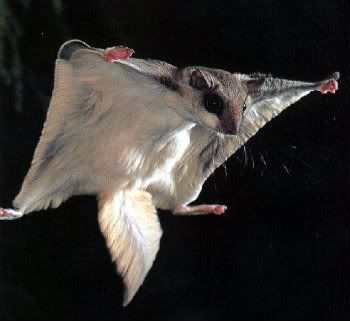
Name: TalderanEsirpus Squirrel
Characteristics:
This species of mammal is quite intriguing, for the most part as it can both climb to great heights and then glide down- attacking its prey. Being omnivores, they mainly feed on insects, nuts, berries, and other plant matter found in a trees branches and smaller mammals that climb around the Spires. They are around 3 feet in length and weigh around 4-6 lbs of condensed muscle and hollow bones for better lift, they range from every color bark has and have vibrant green eyes or even a rusty red barkish color.
They attack by waiting for their prey to be in the right place whilst they themselves are camouflaged with a trees bark, target unsuspecting, then they jump backwards, turn and glide silently, landing on the victims body, gripping onto it with their spur like paws and biting repeatedly, their razor sharp teeth excrete a toxin that when released can break down any carbon substance for a short time which will then break down the animals fur, skin, or feathers down rather quickly, paralyzing the victim in the process and painfully. The acid has no affect to their own tract system as there is a special chemical coating the inside of their bodies.
This chemical, if harvested correctly can prove to be very useful when mixed with the right salves and applied to common burns. Works well with sun burn as well, if prepared in the right way the chemical can be used as a salve to prevent sun burn in the first place. They look like squirrels but they're a world of trouble for the unsuspecting target they choose to make a meal of, while they appear to be cute and cuddly they are deadly predators if not handled in a safe way. Their teeth are small but act like sharp razors when ripping apart their prey, they have molars in the back that allows them to chew their food as well as various leafs they munch on when they are not so lucky with acquiring meat (what plants they munch on tend to be the source of the created toxins and chemicals.)
The TalderanEsirpus Squirrel lives mostly in the trees and work well with any weather and can be found in both northern and southern Taldera, they live in groups of two and are territorial, so you'll never see more than two of them at once every mile or so but they will never attack something that is bigger than themselves. When they breed, they mate for life and are very protective of their young; the young Esirpus Squirrel will have no deadly toxin in their body as of yet, they acquire this when they begin eating the correct plant material their parents bring them. Once the squirrel starts to produce enough toxin, they will have this massive craving to attack another mammal for food, this will usually be one of their parents if they are unlucky enough.
If a traveler is lucky enough, or an adventurer, and stumble upon newborn kits they can take the squirrel and train the little rascal as a pet as it is the growing toxin in their bodies that makes them feral to other animals. Beware though, the two parent squirrels will attack you if you try and you won't be a happy camper with a lot of burns covering your skin and not to mention paralyzed at such a height in the trees. When the young are old enough to become independent, the parent squirrels will actually get up and migrate elsewhere for the young to look after their former territory.
With the new adult Esirpus squirrel, he or she will protect the territory and when mating time comes around (mid summer) they will begin gliding around the trees, and choosing an open area where they are camouflaged, their tails will begin flicking in a rhythmic motion, excreting a musk appropriate to their gender to attract the opposite gender. Once another squirrel has been lured in, the squirrels will then mate for life and begin their own family. They birth only one kit at a time, no exceptions.
*Credit goes to Ana Sol Starris
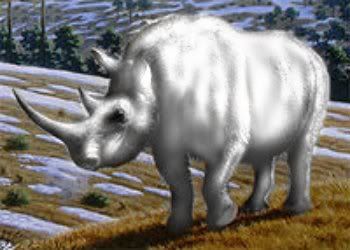
Name: Olidosapux
Characteristics: The Olidosapux in Taldera are roughly the same size as those in Cyphrus. They also sport a white coat, thicker hides, and have longer horns. They typically eat grass, short shrubs, and berries. Their herds are scarce, but there is one that can usually be found in the general are of The Spires at any given time.
*Photomanipulation courtesy of Bolden Denusk
-

Capricious - Assistant Storyteller of The Spires
- Posts: 390
- Words: 171332
- Joined roleplay: September 25th, 2012, 11:14 am
- Location: The Spires
- Race: Staff account
- Office
- Medals: 1
-

Bestiary and Flora of The Spires
![]() by Capricious on March 3rd, 2013, 4:48 am
by Capricious on March 3rd, 2013, 4:48 am
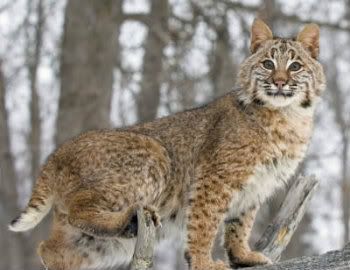
Name: Bobcat
Characteristics:The Talderan Bobcat has a darker coat than those in many other areas. They are excellent climbers, sharp hearing and vision, with a strong sense of smell. Males weigh 30-60lbs, with females only weighing slightly less. They prefer to hunt hares and wood rats, though will feast on squirrels, birds, fish, even other smaller carnivores.
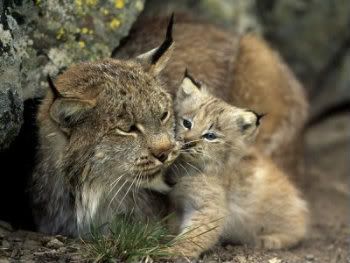
Name: Talderan Lynx
Characteristics:The Talderan lynx has a lighter coat varying in shades of gray and brown, occasionally with spotted patterns. They are notably smaller than the Talderan Bobcat, weighing between fifteen to twenty-five pounds. As a whole they are known for their territorial nature, heightened senses of scent, vision, and hearing, and their fine coats. Though generally solitary, the Talderan lynx populations are known to form packs between winter and summer to care for their young. They are known to keep to the more heavily forested areas, generally near water.
Name: Miststalker
Characteristics: Short, inky black fur, large pure white eyes. The Miststalker is one of the most dangerous predators in Southern Taldera. It hunts with the mist, and none know where they make their den. It has two large fangs that protrude from its mouth, a slicing edge on the outside, serrated on the inner curve. They have a toxin that excretes and coats the serrated edge. This toxin causes the afflicted to be paralyzed in a state of numbness. During this delirious state, the individuals have been known to smile or laugh as they are being eaten.
Characteristics: Short, inky black fur, large pure white eyes. The Miststalker is one of the most dangerous predators in Southern Taldera. It hunts with the mist, and none know where they make their den. It has two large fangs that protrude from its mouth, a slicing edge on the outside, serrated on the inner curve. They have a toxin that excretes and coats the serrated edge. This toxin causes the afflicted to be paralyzed in a state of numbness. During this delirious state, the individuals have been known to smile or laugh as they are being eaten.
-

Capricious - Assistant Storyteller of The Spires
- Posts: 390
- Words: 171332
- Joined roleplay: September 25th, 2012, 11:14 am
- Location: The Spires
- Race: Staff account
- Office
- Medals: 1
-

Bestiary and Flora of The Spires
![]() by Capricious on March 3rd, 2013, 4:49 am
by Capricious on March 3rd, 2013, 4:49 am
Name: Shrieking Lizard
Characteristics:
Physical Characteristics: The Shrieking Lizard is small, about six inches long, with large dorsal fins of varying shades of pink and yellow. It's body is mainly dull brown with patterns of black, but dark green is not uncommon. Long, curved claws enable the Lizard to cling to many surfaces, while its sharp teeth deliver a nasty bite that will fester without fail if not dealt with among larger animals. The Shrieking Lizard is most known for the ability to mimic the cry of nearly every beast that stumbles upon it except the very lowest. It has even been rumored that the more devious have been able to copy the sound of infants crying. The cries are used to lure prospective prey to the lizards, who wait together in overwhelming masses to overpower their prey.
Social Structure: Shrieking Lizards never live alone. While it is rare to stumble upon them, once a person encounters one Lizard, it should be noted that dozens more may be lurking around to pounce.
The Shrieking Lizard is a ground dwelling reptile that will utilize ambush tactics by climbing up the trunks of trees and flinging themselves at their prey. Despite the weakness of their venom, when attacked by a large group the amount delivered to the blood will kill within minutes, or at worse, within an hour. The venom is very painful once injected, but the Shrieking Lizards will not eat their prey until they are dead.
These groups of lizards are led by a matriarch and patriarch. The position is a contended one with the loser of such battles becoming sustenance for the winner. The groups of Shrieking Lizards are known as covens, and each coven consists of nearly a hundred individuals. There are roughly seven covens in southern Taldera, but since the Lizards are not one to migrate across the region, encountering roaming covens is extremely rare and incredibly amusing to watch, for the Lizards tend to crawl over one another and tumble around in such masses.
Miscellaneous: Shrieking Lizards have a voracious appetite and will prey upon everything but for beasts with the toughest of skins. Their venom can be harvested and sold for a moderate price, but otherwise they are worthless to the economy.
*Credit goes to Chamaeleon

Name: Talderan Garter Snake
Characteristics:Talderan garter snakes are a compilation of many non-venomous species in the region, although they are more common in the southern areas of Taldera. Common color patterns, like black snakes with white or yellow stripes running the length of their body, are present as well as some varied ones that resemble the highly venomous, larger in Taldera, such as diamond-like and chain-link patterns of widely varied colors. These snakes have few defense mechanisms otherwise, and will flee danger if necessary. These snakes produce a very mild neurotoxin for hunting. They are low tier predators that make meals of insects, small birds, and small fish at best, depending on the environment. Mating is in late spring with large clutches (15-90 eggs based on female fertility) hatching in the summer. Mating rituals and habits vary based on species and mimicry. During the fall and winter, these snakes will hibernate if it’s too cold, though the southern parts of Taldera are generally warm enough to keep the snakes active year round. Although generally small, some species do reach larger sizes due to Taldera’s thriving environment. While not threatening themselves, the garter snakes and their mimicry of dangerous species add that much more to danger of the Talderan wildlife.
*Credit to Tiki
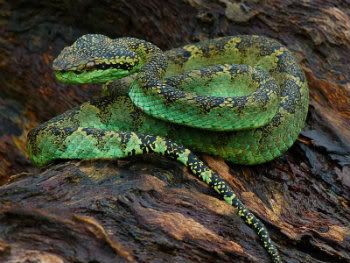
Name: Talderan Viper
Characteristics:The Talderan Viper is a rare type of snake found only in Southern Taldera. It was originally a common brown viper, but the Djed Storm of 512 AV altered many of the species. They are now considered an invasive species and is threatening the survival of the common brown viper.
*Credit to Chamaeleon
-

Capricious - Assistant Storyteller of The Spires
- Posts: 390
- Words: 171332
- Joined roleplay: September 25th, 2012, 11:14 am
- Location: The Spires
- Race: Staff account
- Office
- Medals: 1
-

Bestiary and Flora of The Spires
![]() by Capricious on March 3rd, 2013, 4:49 am
by Capricious on March 3rd, 2013, 4:49 am
Frequency: High
Threat level: Low
Major features: Glowing Body, Ink Release
Abilities:
Every time the Stainer swims, it unknowingly releases blue ink into the water. This unexpected liquid will stain whatever it comes in contact with for five bells.
Most common in: Taldera
Physical characteristics:
The Hopper's Stainer is a pure blue fish that can grow up to a foot in length. The body is designed for fast movements and quick turns. The tail creates the bottom half of a heart. The lower half of the fish's body is pure white, nearly fluorescent.
Social Structure:
The Lily Hopper's Stainer lives in groups up to the thousands. There is no pecking order and they live in peace with the environment. A female Stainer requires a male to mate with and may lay up to three hundred eggs, one third of which will truly hatch. The female will burrow into the soft soil of the river and keep the eggs inside of her. She will not move from this spot. The male will bring water species for the female to survive on. Eggs take two seasons to hatch and eat the female from the inside out.
Miscellaneous:
The Stainer is not a hostile species.
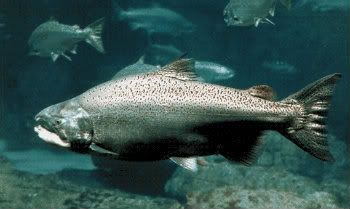
Name: King Salmon
Characteristics:The King Salmon comes in a wide variety of colors. A common trait is silvery sides, and white ventral surfaces. The most common colorings on top are blue-green, purple, or red. Those in Taldera typically weigh 50-150lbs. They are most common in bays, but will return to the rivers they were in which they were born in order to spawn.
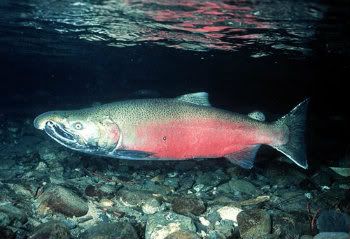
Name: Silver Salmon
Characteristics:The Silver Salmon is predominately silver, with dark blue backs. They live most of their life in bays, returning to rivers to spawn. Those in Taldera typically weigh 15-35lbs.
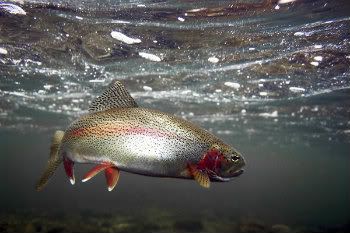
Name: Rainbow Trout
Characteristics:As their name suggests, the rainbow trout come in a wide variety of colorings. Like Salmon, they live predominately in the local bays, and spawn in the rivers in which they were born. Those in Taldera typically weigh 5-20lbs.

Name: Talderan Sea Lion
Characteristics:Talderan Sea Lions range in color from pale yellow to a reddish, tawny shade. These can only be found along the coasts of Storm Bay. The females weigh approximately 750-1250lbs, whereas males are heavier at 1500-3000lbs.
-

Capricious - Assistant Storyteller of The Spires
- Posts: 390
- Words: 171332
- Joined roleplay: September 25th, 2012, 11:14 am
- Location: The Spires
- Race: Staff account
- Office
- Medals: 1
-

Bestiary and Flora of The Spires
![]() by Capricious on March 3rd, 2013, 4:50 am
by Capricious on March 3rd, 2013, 4:50 am
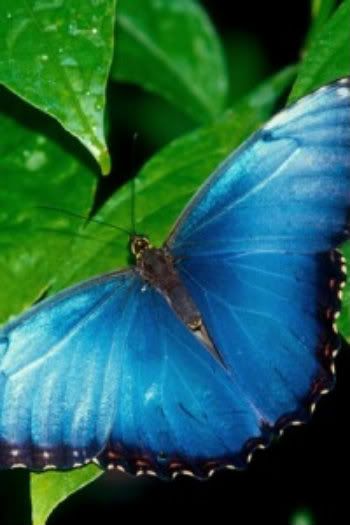
Name: Hahk'Loa
Characteristics:The Hahk'Loa is a native butterfly of the Temple of Caiyha at the Spires. It is known for its phosphorescent coloring, its mood altering secretions, and its lethal poison. This creature is considered sacred by all native Spirians. Any found purposefully harming one will receive one of the Judgments.
*Credit to Tiki
Frequency: Medium
Threat level: Medium
Major features: Bright yellow coloring, backward antennas, eyeballs on wings.
Abilities: To disinfect a wound
Most common in: Only on the Petal of the Silver Crescent
Physical characteristics:
The Talderan Dancing Moth is a smaller moth with a wingspan of only one foot. The length is nearly three feet. Males are the same size but black in color. The antennas are located on the back of the butterfly, not the top, and are nearly two feet in length. The all brown body is located under the wings of the moth.
There are only two wings on the moth and they are the exact same. There are two sets of eyes on the moth and both are orange with black pupils. Two lines of orange dashes lay in the middle of the wings. Another set of eyes rest below these. Purple decorates the corners of the moth's wings.
Upon flying high, the Talderan Dancing Moth will tumble down to the ground below. They always pull back up before smacking against the earth. Their movements make it look as though they are dancing in the sky.
There are only two wings on the moth and they are the exact same. There are two sets of eyes on the moth and both are orange with black pupils. Two lines of orange dashes lay in the middle of the wings. Another set of eyes rest below these. Purple decorates the corners of the moth's wings.
Upon flying high, the Talderan Dancing Moth will tumble down to the ground below. They always pull back up before smacking against the earth. Their movements make it look as though they are dancing in the sky.
Social Structure:
There is no social structure within the Dancing Lantern with the Talderan Dancing Moth. All moths harmonize together.
Miscellaneous:
The Talderan Dancing Moth has the ability to disinfect a wound and are attracted to those with open sores. Patients from Nature's Nurture are regularly brought to the Dancing Lantern by assistants. Those who smell like blood, however, will have the dancing moth land on them and try to heal them. This can lead to a sore forming from the particles the moth uses to cleanse a wound. Any injury caused by the moth can only be disinfected by the moth.
*Credit to Lixue
*Credit to Lixue
Frequency: Medium
Threat level: High
Major features: Spotted wings, teeth.
Abilities: Can bite, has venom.
Most common in: Only found on the Petal of the Silver Crescent
Physical characteristics:
A female moth can have a wingspan of half a foot and a length of half a foot. The male is nearly half as small. The body is short and stocky. The head is pure white with blue circles . Behind this, there is a thick brown stripe followed by blue. Yellow and white reside on the blue.
There is one set of wings with one white web behind. This helps the moth slow down and also stick to its victim. The top set of the wings are all white with black rimmed circles. The antennas are grey and only three inches in length.
There is one set of wings with one white web behind. This helps the moth slow down and also stick to its victim. The top set of the wings are all white with black rimmed circles. The antennas are grey and only three inches in length.
Social Structure:
The Talderan Snow Moth lives in clumps of up to twenty moths. They generally live inside a bush and post "lookouts" as a bee nest would. The watchers will alarm the group if someone is too close and all but the female leader will attack. The female leader does nothing besides find the home and if removed, the rest will leave as well.
Miscellaneous:
The Talderan Snow Moth is extremely territorial. They will claim an area, normally a bush of some sort, as their home. Any who wander too close or try to touch the bush are attacked. The moth bites the victim with small fangs and injects a poison that leaves the person dizzy. If the venom is not sucked out within a bell's time, the individual will suffer from hallucinations for up to two weeks. There will also be a high fever.
*Credit to Lixue
Frequency: High
Threat level: Low
Abilities: Glows
Most common in: Only on the Petal of the Silver Crescent
Physical characteristics:
The Talderan Glowing Moth has a wingspan of three feet and is nearly two feet long. The antennas are the length of a Jamoura's middle finger and have leaf-like petals at the end. The female moth is nearly a foot larger than the male. The body is a myriad of colors, ranging from yellow to blue to green. The moth has two sets of wings, one top and one bottom.
The top set are fluorescent green. Near the body, red extends to form a shape akin to a thumb print. This is surrounded by grey before extending into green. Near the end of the wings, there is a single diamond shaped yellow dot followed by a black line. Each wing is nearly half a foot in width and extend outward.
The bottom set of wings extend downward and have droplet shaped tips. Together, the wings look like a face. There is a set of blue eyebrows with diamond shaped green eyes. The "nose" consists of a lighter shade creating a line around the wings.
The Talderan Glowing Moth has the ability of "misting". This means, when in danger or angered, the moth will shake rapidly and tiny particles of green will fall onto the predator. Besides being incredibly itchy, the particles will dye the wearer a glowing green for nearly two weeks.
The top set are fluorescent green. Near the body, red extends to form a shape akin to a thumb print. This is surrounded by grey before extending into green. Near the end of the wings, there is a single diamond shaped yellow dot followed by a black line. Each wing is nearly half a foot in width and extend outward.
The bottom set of wings extend downward and have droplet shaped tips. Together, the wings look like a face. There is a set of blue eyebrows with diamond shaped green eyes. The "nose" consists of a lighter shade creating a line around the wings.
The Talderan Glowing Moth has the ability of "misting". This means, when in danger or angered, the moth will shake rapidly and tiny particles of green will fall onto the predator. Besides being incredibly itchy, the particles will dye the wearer a glowing green for nearly two weeks.
Social Structure:
The Talderan Glowing Moth lives in harmony with other creatures. There is no higher caste, nor is there a dominant race.
Miscellaneous:
The Talderan Glowing Moth does not attach to visitors at the Dancing Lantern, nor will it ever. This is the most prominent moth at the Dancing Lantern.
*Credit to Lixue
Frequency: Medium
Threat level: No threat
Major features: Humongous size, child-like cry, known for "attaching" to visitors at Dancing Lantern
Abilities: None
Most common in: Only on the Petal of the Silver Crescent
Physical characteristics:
The Talderan Redwood Moth is the biggest moth in the Taldera region. It can grow to nearly six feet wide and five feet long. The antennas are thumb length long and the body nearly a foot in length. Both the female and the male are the same size and coloring.
The body is a mixture of orange and white. A white line covers the face before melting into flourescent orange which goes until halfway down the body. Another white strip and a patch of orange.The orange and white flip-flop back and forth on the end of the body.
The wings are in sets of two and barely differentiate. All wings are brown, orange, and white. The orange fades at the top of the body out onto the wings themselves before blending into the brown. Bean shaped white spots are tinged with orange closest to the body. A pumpkin colored line separates the next section. The top set of wings dissolves into white squares. The bottom set falls into a lighter brown with black lines.
The body is a mixture of orange and white. A white line covers the face before melting into flourescent orange which goes until halfway down the body. Another white strip and a patch of orange.The orange and white flip-flop back and forth on the end of the body.
The wings are in sets of two and barely differentiate. All wings are brown, orange, and white. The orange fades at the top of the body out onto the wings themselves before blending into the brown. Bean shaped white spots are tinged with orange closest to the body. A pumpkin colored line separates the next section. The top set of wings dissolves into white squares. The bottom set falls into a lighter brown with black lines.
Social Structure:
The Talderan Redwood Moth has no social structure. They harmonize with all moths and people.
Miscellaneous:
The Talderan Redwood Moth is the most likely butterfly to "attach" to a visitor at the Dancing Lantern. It has been known to prefer children for this behavior. The moth is also extremely picky in the people it bonds to.
*Credit to Lixue
Frequency: Medium
Threat level: High
Major features: Eight legs, marble rear, large webs
Abilities: Change color with the weather
Most common in: Only on the Petal of Eternal Warmth
Physical characteristics:
The Spirian Marble Spider is rarely found off of the Petal of Eternal Warmth. This is a good thing, given the risks associated with the spider, including death.
The leg length of the spider may be up to six inches. All eight legs are a burnt shade of orange with black stripes near the joints. The body is a tan and sixteen eyes are all black. Two pinches lay at the end of the face. The rear is a large white ball, about the knuckle size of a Jamoura, and is splattered with orange lines. Males and females do not differentiate.
In "Normal" weather, the Spirian Marble Spider will only glow on its rear, a bright white.
The leg length of the spider may be up to six inches. All eight legs are a burnt shade of orange with black stripes near the joints. The body is a tan and sixteen eyes are all black. Two pinches lay at the end of the face. The rear is a large white ball, about the knuckle size of a Jamoura, and is splattered with orange lines. Males and females do not differentiate.
In "Normal" weather, the Spirian Marble Spider will only glow on its rear, a bright white.
Social Structure:
In groups of hundreds, the spiders will specifically choose a certain tree and, within two days, cover it in webs. The Marble Spider will not move from the tree or spread in the foliage. On the Petal of Eternal Warmth, there are only three groups. These creatures can capture prey up to twenty five pounds. With teamwork, the Marble Spider can carry prey up to three hundred pounds.
Miscellaneous:
If someone is unwise enough to fall asleep near one of the Marble Spider trees, they risk having their mouths and nostrils webbed closed by a spider. The Marble Spiders will then proceed to move the body back to the home tree. Children are the most likely prey.
*Credit to Lixue
*Credit to Lixue
Frequency: Low
Threat level: High
Major features: Quills, dangerousness.
Abilities: To inject a venomous quill, change color with the weather
Most common in: Only on the Petal of Eternal Warmth
Physical characteristics:
The Talderan Glow Point is the least common bug at Glowy Night Delights. It hides underneath bushes and rarely comes out in the day. When it does, it must be either angered or provoked. A difficult task unless the bug is in danger.
The Glow Point differentiates in size by male or female. The males range in length from four to six inches and weigh less than a pound. The females are nearly twice the size. They can weigh up to two pounds and longer than a foot.
On the outside of the Glow Point's body are deep purple quills. These are extremely dangerous and hold venom. The inner body is soft and a light blue coloring.
The Glow Point differentiates in size by male or female. The males range in length from four to six inches and weigh less than a pound. The females are nearly twice the size. They can weigh up to two pounds and longer than a foot.
On the outside of the Glow Point's body are deep purple quills. These are extremely dangerous and hold venom. The inner body is soft and a light blue coloring.
Social Structure:
The Talderan Glow Point live in pairs. The female is pregnant nearly nine times a year and gives birth to two offspring. The time to reach maturity is half a season. Before reaching adulthood, the quills are not poisonous. The eggs laid are guarded by the male while the female searches for food. Once the offspring are born, they will feast on their mother until not a crumb is left.
Miscellaneous:
The venom in the Talderan Glow Point's quills has the ability to paralyze a large Jamoura for up to three hours. A small human child risks death or coma. When paralyzed, the individual is aware of all the happenings around them, but they are not able to speak or move.
*Credit to Lixue
*Credit to Lixue
Frequency: High
Threat level: Low
Major features: Multiple wings, brightly glowing body, colorful wings, glowing antennas.
Abilities: To change color with the weather
Most common in: Only on the Petal of Eternal Warmth
Physical characteristics:
The Talderan Daylight Delight is a unique insect. Though its whole body glows, one can only see the body and antennas shine brightly in the daytime. The wings are too thin to truly notice the color.
In total, there are eight wings on the creature. Each wing is exactly alike, creating an optical illusion of a moving rainbow at night. Thin and sticky, the Daylight Delight will "anchor" itself to an object to keep from being blown away. Because of this, it is often found near the ground.
The body of the Talderan Daylight Delight is normally a glowing blue. In fact, the light is so bright no one knows what its actual body looks like. The antennas are long and wispy with a single glowing dot on the end.
In total, there are eight wings on the creature. Each wing is exactly alike, creating an optical illusion of a moving rainbow at night. Thin and sticky, the Daylight Delight will "anchor" itself to an object to keep from being blown away. Because of this, it is often found near the ground.
The body of the Talderan Daylight Delight is normally a glowing blue. In fact, the light is so bright no one knows what its actual body looks like. The antennas are long and wispy with a single glowing dot on the end.
Social Structure:
The Daylight Delight lives a solitary life. It will mate twice a year and lay eggs, but has never show any evidence of being a "family" insect. They seem to have no problem living in groups, if necessary.
Miscellaneous:
The Talderan Daylight Delight is the most often found bug during the daytime. If a change in weather is arriving, everything on the bug will be a specific color, depending on the weather.
*Credit to Lixue
*Credit to Lixue
Frequency: High
Threat level: None
Major features: Six legs, glowing rear.
Abilities: Glows
Most common in: The Spires
Physical characteristics:
The Spirian Nightlight is one of the most common bugs in the Spires. They light up the sky in large numbers and serve as a weather-warning device. The bug has also been lured into paper lanterns around the city. Some of the lanterns are colorful or have designs cut into them. These help light the path at night in an interesting way.
The insect has six legs, and two antennas. A pair of brown wings covers the top of the Nightlight's body. Underneath is shelled and hard. The rear glows yellow in a flashing pattern. The eyes are a reflective black, observing all around them. The face is a red and there are no pinchers.
The insect has six legs, and two antennas. A pair of brown wings covers the top of the Nightlight's body. Underneath is shelled and hard. The rear glows yellow in a flashing pattern. The eyes are a reflective black, observing all around them. The face is a red and there are no pinchers.
Social Structure:
There is no social structure with the Spirian Nightlight. Females may take several partners and males may breed several females. Children are laid in the form of eggs on the bottom side of leaves.
Miscellaneous:
If an individual crushes the Spirian Nightlight, a yellow residue is left behind. At night, this will glow brightly and last for two weeks. Children will smash the bugs and smear the paste for decoration on their bodies.
*Credit to Lixue
*Credit to Lixue
-

Capricious - Assistant Storyteller of The Spires
- Posts: 390
- Words: 171332
- Joined roleplay: September 25th, 2012, 11:14 am
- Location: The Spires
- Race: Staff account
- Office
- Medals: 1
-

Bestiary and Flora of The Spires
![]() by Capricious on March 3rd, 2013, 4:52 am
by Capricious on March 3rd, 2013, 4:52 am
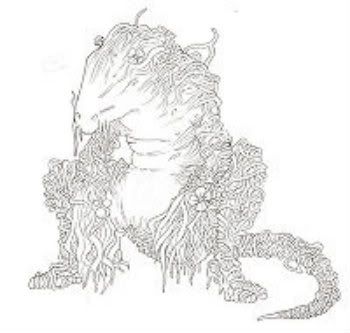
Name: Vinumia
Characteristics:Vinumia (pl. Vinumae) is a landspawn composed entirely of vines and flora found in select few swamps of Mizahar. They are a solitary creature with a normally docile nature unless readily provoked and are territorial to the point that if any harm comes to its habitat it will charge. If they are forced into combat, they are vicious, and will not stop their pursuit of an intruder until it’s dead. They can disperse their bodies in the water and reform, and even on land they are very hard to kill. -Quoted from the Wiki
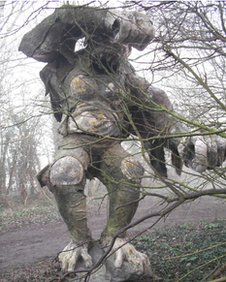
Name: Yukman
Characteristics: The Yukman (pl. Yukmen) is the most common landspawned monster. It rises from the very earth in large numbers and usually proceeds to destroy any civilized life in its surroundings. Resembling a parody of whatever races inhabit the area, the Yukman is easily recognizable by its high-pitched shrills, cracked skin and the presence of local soil embedded in its body as rocks, sand, grass or even raw gems. Yukmen are violent and feral, yet they can sometimes be tamed or enslaved, and in captivity they can become more similar to people. This is part of their tendency to mimic the habits of those around them. - Quoted from the Wiki
-

Capricious - Assistant Storyteller of The Spires
- Posts: 390
- Words: 171332
- Joined roleplay: September 25th, 2012, 11:14 am
- Location: The Spires
- Race: Staff account
- Office
- Medals: 1
-

Bestiary and Flora of The Spires
![]() by Capricious on March 3rd, 2013, 4:52 am
by Capricious on March 3rd, 2013, 4:52 am
Frequency: Low; High at Lily Hopper's Rafting
Major features:
Lily Hopper's Lily Pads were named by Shiana when she opened her rafting store in 487 AV. She discovered them accidentally and used her intellectual mind to create a thriving business.
The lily pads can grow to be five feet across and hold a large Jamoura's weight. Each pad is green on top and brown on the bottom. The outer rim bends upward to hold any passengers in. Shiana is working on breeding the plant bigger.
The lily pads can grow to be five feet across and hold a large Jamoura's weight. Each pad is green on top and brown on the bottom. The outer rim bends upward to hold any passengers in. Shiana is working on breeding the plant bigger.
Uses:
The lily pads have the ability to be used for rafting and boating. They will hold up to a large Jamoura. The floating rafts are also used in water blessing ceremonies.
Most common in:
Southern Taldera, outside The Spires
Miscellaneous:
When babies are born, mothers wrap their child in multiple blankets and send them down the river on one of the Lily Hopper's Lily Pads. Someone will ride on another pad next to them, watching. It is considered being "water blessed" if the child makes it to the second gate without falling off.
Name: Dawn Flower Vine
Frequency: Low
Major Features: The dawn flower vine winds its way up trees seeking sunlight. The vine has dark green, heart-shaped leaves about five inches in diameter at their broadest point. Each leaf is spaced about two to three inches apart on the vine. The stalk of the vine is brown and fibrous. The dawn flower grows slowly, only three to five feet per year; however it does not freeze and die in the winter. Instead the vine goes into a dormant stage and when spring comes it picks up its growth where it left off. It takes a very long time for this vine to reach the top of a tree, but when it does it blossoms three to four of the very rare and exquisite dawn flowers. The flower this vine produces is startlingly large, the bud is roughly the size of a human fist and the flower it blooms is approximately one foot in diameter. The dawn flowers have satiny, peach petals with a thin, white border that fade into a bright magenta around the center where golden stamens thrust out. This bloom gives off a subtle, sweet scent reminiscent of honey. This vine only flowers when it reaches the top of a tree and sunlight and the flowers only grow at its highest point. Once the vine has reached its highest point and bloomed flowers two years in a row it quickly withers and dies.
Uses: This flower serves a mostly decorative purpose. It is also sometimes used as an offering to Syna by devoted followers and often times blossoms are present during celebrations to the goddess.
Most Common In: Central Taldera; also there are also usually a few vines in various stages of growth around the Shrine to Syna in the Spires though it is considered a massive faux paus to pluck flowers from them.
Miscellaneous: Finding a blooming dawn flower vine is incredibly rare but the blooms are often sought after by courting individuals of all species to give to their intended lovers as a show of their dedication and bravery. It is widely acknowledged throughout Taldera that anyone seen in the possession of such a flower is either an exceptionally clever and daring individual or are they deeply loved by one.
Name: Lorkh’Grapha
Frequency: Medium-Low
Major features: Lorkh’grapha is a four foot tall plant with a single broad arrow shaped leaf that has a large slit on one side where the stalk attaches to the leaf. The stalk is a light green. The leaf is vibrant in color, a green background with random pink splotches covering it and the leaf veins are a deep magenta. These plants give off a slight fragrant scent much like cloves, and grow together in thick clumps. These plants seem idyllic places to rest beneath for the unwary traveler, but beware, in the Jamouran language lorkh’grapha means endless sleep. The scent they release is actually a strong poison that induces coma if an individual is exposed to it for longer than a full bell. There is currently no known cure for the coma this induces, and it is typically considered merciful to kill any who are found to be locked in the endless slumber. If by chance the individual can be woken before the poison has had a chance to fully set in, they are usually plagued by violent cramps and vomiting for several days.
Uses: If one is brave enough to collect the lorkh’grapha leaves, they are very useful for both good and ill intent. Boiling a small strip of leaf in water will create a tea that will help induce a light, dreamless sleep. This medicine should only be prepared by the most experienced of healers as it is easy to overdose a patient. Those with more malevolent intent can create a concentrated poison aptly named ‘Endless Slumber’ by creating an oil extract from the leaf. The oil can be applied to any object that the victim will be exposed to for a moderate duration of time, such as clothing. If the poison is made well it will take effect and send its intended victim into the endless slumber within approximately ten chimes.
Most common in: Often found around bodies of water in Taldera, including ponds and swamps. The lorkh’grapha deals well with cold and can be found growing from mid-spring to late autumn.
Miscellaneous: When finding someone sleeping beneath the lork’grapha it is often considered polite to drag their body away from the plants. Whether the rescuer chooses to drag them to safety and attempt to revive them or simply kill the person is up to them. Any person that has succumbed to the coma will eventually die of dehydration or malnutrition, the local wildlife will not touch a body poisoned by the lorkh’grapha and typically stay clear of the plants themselves.
Frequency: Extremely High
Major features:
The Lunar Clematis is a rapidly growing vine flower. The petals can grow up to three feet in length and tend to be a indescribable pink coloring. They may also be a deep purple or a sea-blue. Moths lay their eggs on the underside of the petals. In the center of the flower, a clump of red or white stamens attract moths. The vine tends to be as wide as it is long and can grow to be anywhere from four to thirty feet.
The plant is very easy to grow and prefers moist, well-drained soil. The Lunar Clematis should receive sun in the afternoon and shade in the morning. Existing all year round, the plant is very hardy. If in the case of the vine being destroyed for some reason, it will return the following spring. Transplanting is extremely easy to do with the Clematis. One simply needs at least three inches of a stem, stick into a controlled environment for at least a season and then plant outside. Water daily.
The plant is very easy to grow and prefers moist, well-drained soil. The Lunar Clematis should receive sun in the afternoon and shade in the morning. Existing all year round, the plant is very hardy. If in the case of the vine being destroyed for some reason, it will return the following spring. Transplanting is extremely easy to do with the Clematis. One simply needs at least three inches of a stem, stick into a controlled environment for at least a season and then plant outside. Water daily.
Uses:
The Lunar Clematis has no real purpose besides attracting moths, particularly the Talderan Glowing Moth. The creatures love the color, taste, and texture of the plant. Eating a Lunar Clematis is dangerous to the health, as the petals and leaves are extremely poisonous.
Most common in:
The Petal of the Silver Crescent only; most common in the Dancing Lantern.
Miscellaneous:
The Lunar Clematis vine is protected by the Hahk'Shatara. Removing a flower or stem from the plant will result in a punishment of storyteller's choice.
Frequency: Moderate
Major features:
Trunk: The trunk of the tree itself is a wonder to behold, tall and thick with a distinct separation at the base as if it had legs. This is a good comparison considering the trees branches tend to move around with startling frequency, giving the illusion they have literally moved from one place to another.
Branches: The branches of the Howling Trees are another main feature and sight to behold. The branches have a smooth litheness that allows them to shift towards water or sunlight in an effort to absorb as much as possible. At times it is said it almost seems as if they are bowing to Syna’s light.
Leaves: The leaves of the Howling tree are thick like bark with a speckled pattered that happened to be where they get their name, whether moving or not any wind in the leaves will create a low howling noise that can be heard from a far distance. Sometimes they are gathered in sparse groups and used as wind chimes.
Sap: The sap of the Howling tree is a hard amber color and surprisingly sweet. It is often plucked raw and eaten as is for if boiled down it becomes decidedly bitter and salty. Upon leaking from the tree the sap takes only a few moments to harden and is not usually gathered as a liquid.
Uses: Sweet or wind-chime.
Most common in: Southern Taldera, around The Spires
Miscellaneous:
Height: 10ft-260ft
Life-span: 50-200 years
They are decidedly hard to grow and bear no fruit, however large of a group they have now could change in the future but they seem to seed themselves just fine.
Currently there are no known medicinal uses.
The Legend
The Jamoura have much to say on the Howling Trees and the story of their birth is often told as a pleasant bedtime story for children or campfire story.
When the Jamoura were still blooming and the humans still had cruelty in hand that mingled with the long suffering effects of the Valterrian the Jamoura were still unprotected, vulnerable and infantile to the world. Caihya took yet another mercy to her children and fellow protects and lovers of nature. She wish for them to grow and thrive to become what she had always meant them to be, what they wished to be.
To keep them hidden in her Spires she also made guards to defend the new people and allow them to grow. These guards and protects were the Howling Trees. Much like the Jamoura own transformation the Howling Tree grew tall and wide, their trunks splitting in halves and resembling humanoid legs and with these legs came a great gift.
They could walk!
These beings of forest like no other helped hide the Jamoura from prying eyes, leading all those making landmarks astray and forcefully casting out those who would do the race or Spires harm. They were the defenders of the Spires and known for their ‘howling’ battle cry. But as need for the protectors lessened and the Jamoura thrived the Howling Trees need no longer defend but Caihya did not wish to take her gifts entirely.
So, enlisting them for their aide yet again, this time as a way to keep time and direction even if one could not see Syna’s light or the sky. For now they would follow the light and should any choose to watch they would know in which direction Syna rose and set and where precisely the light settled in the morn or eve.
To this day it is said that some special trees still retain their guardian status and wander freely through the Spires, working much like their own Hahk'Shatara to protect the balance of the forest and Caihya’s children.
The Game
Players: 2 and up
Rules:
- If caught in a shadow more than five times a player is officially out.
- No shoving
- No tripping
Basic Info:
Light Chasers is a simplex game for the younger children and played a little like freeze tag, the shadows (along with one Jamoura) being ‘it’. The whole idea of the game is not to fall off the petal while simultaneously avoiding the shadows (and other people present) as well as the person who is ‘it’. Basically, chasing each other and hoping from light space to light space.
If a person is caught in a shadow space they must freeze until a person who is ‘it’ unfreezes them or a fellow player with a quick tap on the shoulder.
Generally speaking it gives young Jamoura a sense of balance while moving about on the petals and teaches them to watch their surroundings.
How to become ‘it’: Tagging a person or if the person who is ‘it’ unfreezes a shadowed player that player is now ‘it’.
Frequency: Medium
Major features:
The Wallowing Wish looks like a poorly designed drinking fountain. A large leaf covers the liquid and is connected to the layered green rim. The bottom is a hard, brown shell the shape of half an oval. A vine holds the plant up. Inside the shell, dark acid resides. This liquid can be used for medicinal and evil purposes.
Each plant starts with a vine curling around a tree. It can grow up to lengths of ninety feet. Only after it reaches this designated length will the plant flower. The acid holder is only located at the trunk. This plant has no growing pattern and does not grow in clumps. It randomly appears all across The Spires, inside and out.
Each plant starts with a vine curling around a tree. It can grow up to lengths of ninety feet. Only after it reaches this designated length will the plant flower. The acid holder is only located at the trunk. This plant has no growing pattern and does not grow in clumps. It randomly appears all across The Spires, inside and out.
Uses:
Amputations, to kill
Most common in:
Taldera
Miscellaneous:
The Wallowing Wish is filled with acid. This can be used for things such as amputations, as it can be stopped only by Inarta Glass and the brown shell surrounding it. To complete such a medical maneuver, one must insert the glass into the skin, pour the acid onto the top of the appendage and, as the acid begins its work, move the glass further down. The liquid takes only thirty seconds to cut through a male Jamoura's thigh. This procedure should be completed only by an expert in medicine.
In the same sense, the acid can be used for murderous plots. The brown liquid absorbs clear into anything with sugar and leaves no foul taste. The acid dissolves the individual from the stomach out and causes death within three bells.
In the same sense, the acid can be used for murderous plots. The brown liquid absorbs clear into anything with sugar and leaves no foul taste. The acid dissolves the individual from the stomach out and causes death within three bells.
Frequency: Low
Major features:
Midnight Death is a flower that blooms once every ten years, but stays bloomed for five. This plant can be found surrounded by ivy and water absorbent leaves. Able to grow in any soil, though it prefers well drained dirt, the plant can be transplanted by cutting the stem to the flower and placing it in a jar of water. Once the liquid is gone, Midnight Death can be placed in the earth. One must be extremely cautious and wear gloves, if not long sleeves also, when completing this act.
Midnight Death grow to heights of nine feet and widths of three. Each plant will have approximately four vibrant flowers. Midnight Death changes colors with the seasons. Spring is deep violet, Summer is bright red, Fall is gold and Winter is blood blue.
The flowers themselves, despite popular belief, is not the poisonous part of the plant. Neither is the orange protruding stem covered in bumps. The poison comes from the clear powder that covers the plant. This powder is not noticeable and designed by nature to cling to whatever dares to touch it. Neither is the residue able to be harvested. The skin will absorb the dust and infiltrate the bloodstream.
Midnight Death grow to heights of nine feet and widths of three. Each plant will have approximately four vibrant flowers. Midnight Death changes colors with the seasons. Spring is deep violet, Summer is bright red, Fall is gold and Winter is blood blue.
The flowers themselves, despite popular belief, is not the poisonous part of the plant. Neither is the orange protruding stem covered in bumps. The poison comes from the clear powder that covers the plant. This powder is not noticeable and designed by nature to cling to whatever dares to touch it. Neither is the residue able to be harvested. The skin will absorb the dust and infiltrate the bloodstream.
Uses:
To kill
Most common in:
The Whispering Tunnel, Spires
Miscellaneous:
Midnight Death attacks silently. If the victim brushes against it or even touches a finger to it, the plant releases powdered residue. This is absorbed into the bloodstream and the individual will die exactly at midnight of the same day. No known cure has been found.
The dust cannot be harvested for evil purposes because it disintegrates if it is not touching the flower or skin. If a person is found trying to remove a plant from the garden (or move a plant into the city) without probable cause, they risk one of the three judgments.
The dust cannot be harvested for evil purposes because it disintegrates if it is not touching the flower or skin. If a person is found trying to remove a plant from the garden (or move a plant into the city) without probable cause, they risk one of the three judgments.
Frequency: Medium; Only in the Spires
Most common in: The Spires
Major features:
The Bronze Leaf is best known for the bark that, quite literally, peels off with the simplest of touches. The bark is rough on the outside, but has a thin layer of fuzz on the inside. It is a tough piece of the tree, but bends when wet or warm.
The tree itself can live up to one hundred and ten years. Even with such a long aging time, the plant can only grow to fifty feet in height. This is caused from the fact the tree must have a large supply of water; such an amount that is only achieved during the rainy season in The Spires.
The Bronze Leaf does not grow well in the shade. The warmth from the sun encourages the bark to peel and leave the tree.
The tree itself can live up to one hundred and ten years. Even with such a long aging time, the plant can only grow to fifty feet in height. This is caused from the fact the tree must have a large supply of water; such an amount that is only achieved during the rainy season in The Spires.
The Bronze Leaf does not grow well in the shade. The warmth from the sun encourages the bark to peel and leave the tree.
Uses:
The Bronze Leaf can be used to create paper. Once the bark is peeled off, it must spend three days drying. During this time, one must press the paper into the design they want. To help assist the bark in changing movements, it is encouraged that the bark has water sprinkled on it twice a day. If there is no sun available, it is possible to place something warm (such as a heated rock) on top of the bark.
After the bark has dried, it is ready to be written on. Any liquid can and will be absorbed, making the liquid permanent.
The Bronze Leaf can also be used to create masks. The bark has a soft layer of fuzz on the inside that helps keep the skin from becoming irritated. Given the bark keeps any liquid on it, the skin of the tree is perfect for painting on or decorating.
After the bark has dried, it is ready to be written on. Any liquid can and will be absorbed, making the liquid permanent.
The Bronze Leaf can also be used to create masks. The bark has a soft layer of fuzz on the inside that helps keep the skin from becoming irritated. Given the bark keeps any liquid on it, the skin of the tree is perfect for painting on or decorating.
Miscellaneous:
The bark can be harvested during any season. If too much bark is taken, the tree will discontinue producing the skin and will no longer shed.
Frequency: Medium
Most Common In: Southern Taldera
Major Features: Purple Coloring, small size, bitter juice
Uses: Restoring unusual amounts of Djed in one's body
Miscellaneous:
Peri Peree was physically altered by the Djed Storm of 512. Before the storm, the berry was more similar to a blue berry. It was dark purple and larger in size, nearly the size of a blackberry. The berry had a sweet taste and was common in cooking, particularly pies.
Once the storm hit, the plant changed. Instead of a deep shade of purple, it turned into a nearly florescent coloring. The fruits minimized in size, left only to that of a small pebble and nearly as hard. It has been discovered that when one eats the bitter berry, they suffer from unusual amounts of Djed. It is believed the plant itself was hit by extreme amounts during the storm. Upon experimentation, it was found that the plant would grow the same fruit if transplanted.
Peri Peree is a good plant for those who have been impacted by Djed and wish to keep their effects. It is estimated that if someone eats one of these fruits before exercising magic, particularly in the learning stages, that there is less of a chance to overgive.
This plant was not found in the wilderness until early in the winter season of 512 AV.
Once the storm hit, the plant changed. Instead of a deep shade of purple, it turned into a nearly florescent coloring. The fruits minimized in size, left only to that of a small pebble and nearly as hard. It has been discovered that when one eats the bitter berry, they suffer from unusual amounts of Djed. It is believed the plant itself was hit by extreme amounts during the storm. Upon experimentation, it was found that the plant would grow the same fruit if transplanted.
Peri Peree is a good plant for those who have been impacted by Djed and wish to keep their effects. It is estimated that if someone eats one of these fruits before exercising magic, particularly in the learning stages, that there is less of a chance to overgive.
This plant was not found in the wilderness until early in the winter season of 512 AV.
-

Capricious - Assistant Storyteller of The Spires
- Posts: 390
- Words: 171332
- Joined roleplay: September 25th, 2012, 11:14 am
- Location: The Spires
- Race: Staff account
- Office
- Medals: 1
-

9 posts • Page 1 of 1
Who is online
Users browsing this forum: No registered users and 0 guests